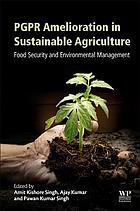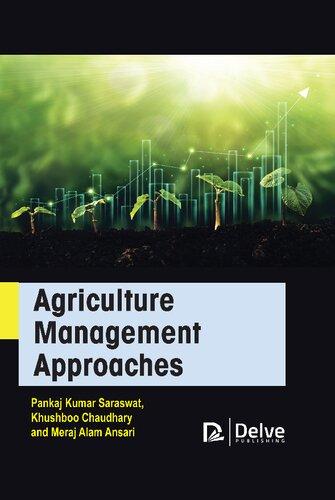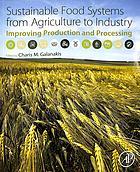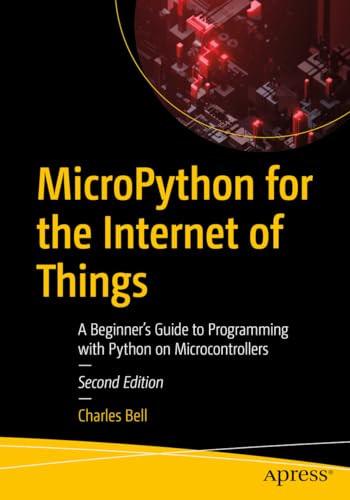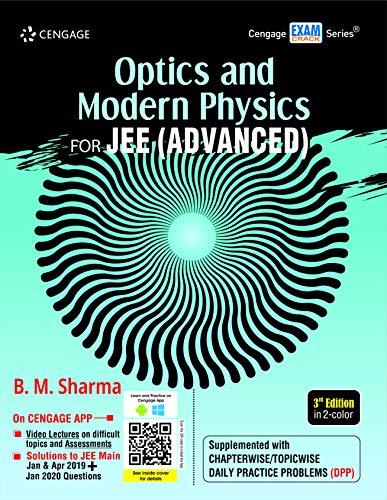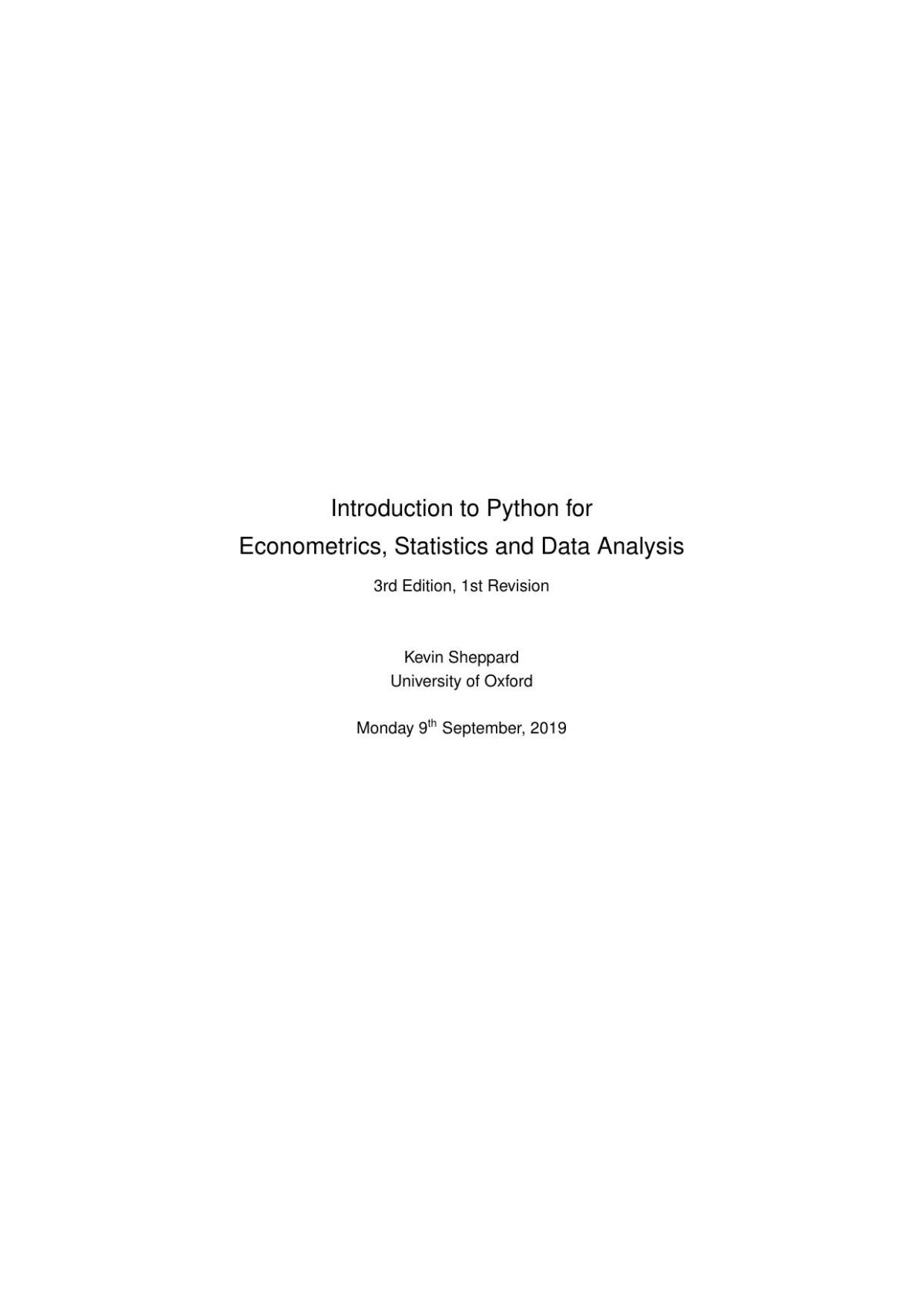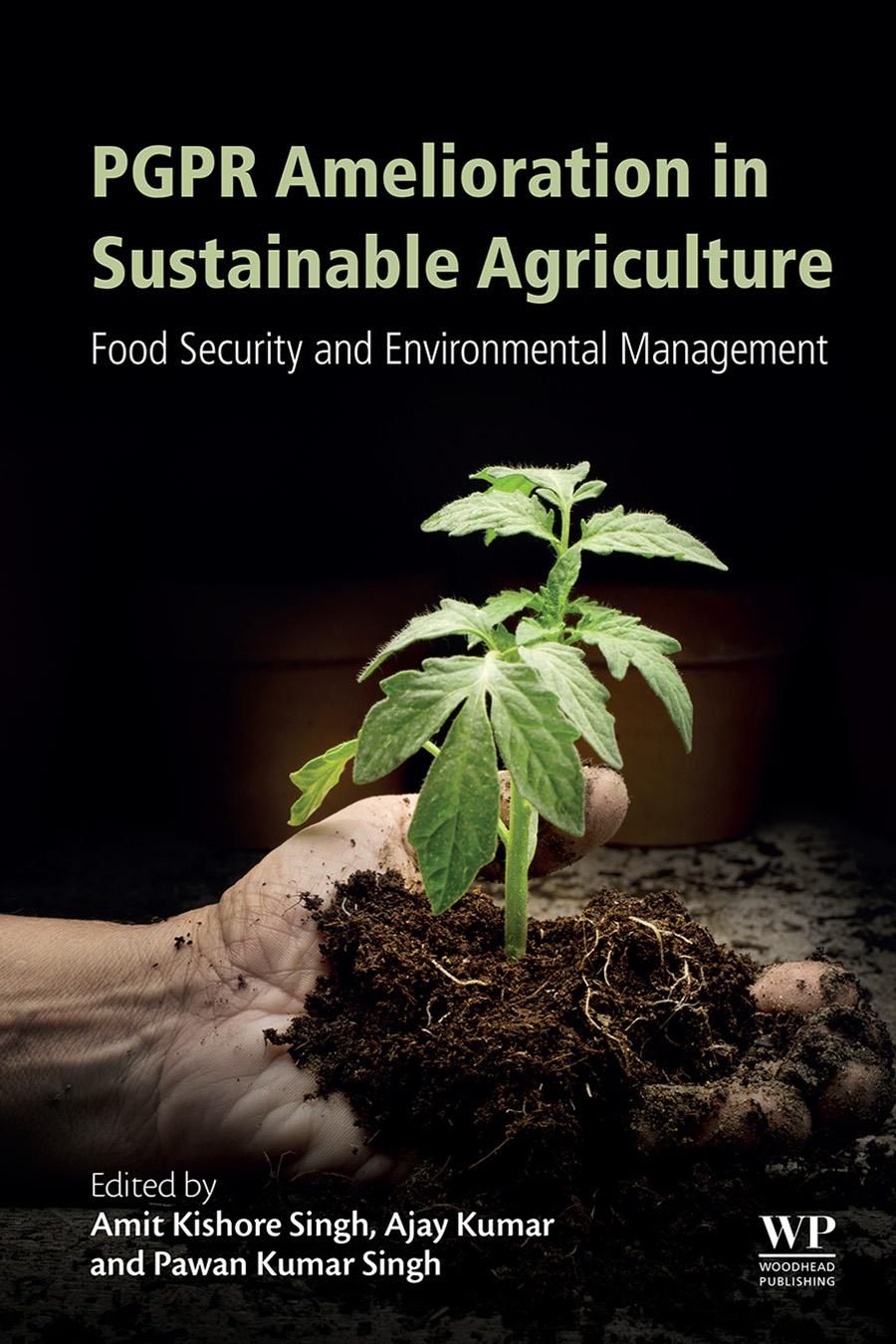https://ebookmass.com/product/pgpr-amelioration-in-
Instant digital products (PDF, ePub, MOBI) ready for you
Download now and discover formats that fit your needs...
Farming System And Sustainable Agriculture Alok Kumar Patra
https://ebookmass.com/product/farming-system-and-sustainableagriculture-alok-kumar-patra/ ebookmass.com
Agriculture Management Approaches Pankaj Kumar Saraswat
https://ebookmass.com/product/agriculture-management-approachespankaj-kumar-saraswat/
ebookmass.com
Sustainable Food Systems from Agriculture to Industry Improving Production and Processing Galanakis
https://ebookmass.com/product/sustainable-food-systems-fromagriculture-to-industry-improving-production-and-processing-galanakis/
ebookmass.com
Communications Toolkit 5th Edition Jane Grellier
https://ebookmass.com/product/communications-toolkit-5th-edition-janegrellier/
ebookmass.com
A
Game of Retribution Scarlett St. Clair
https://ebookmass.com/product/a-game-of-retribution-scarlett-st-clair/
ebookmass.com
(eTextbook PDF) for Geology: Earth in Perspective 3rd Edition
https://ebookmass.com/product/etextbook-pdf-for-geology-earth-inperspective-3rd-edition/
ebookmass.com
MicroPython for the Internet of Things: A Beginner’s Guide to Programming with Python on Microcontrollers 2nd Edition Bell
https://ebookmass.com/product/micropython-for-the-internet-of-thingsa-beginners-guide-to-programming-with-python-on-microcontrollers-2ndedition-bell/ ebookmass.com
Optics and Modern Physics for JEE (Advanced), 3rd edition B. M. Sharma
https://ebookmass.com/product/optics-and-modern-physics-for-jeeadvanced-3rd-edition-b-m-sharma/
ebookmass.com
Ride the Tide Julie Ann Walker
https://ebookmass.com/product/ride-the-tide-julie-ann-walker-2/
ebookmass.com
Introduction to Python for Econometrics, Statistics and Data Analysis Kevin Sheppard
https://ebookmass.com/product/introduction-to-python-for-econometricsstatistics-and-data-analysis-kevin-sheppard/
ebookmass.com
PGPRAMELIORATIONIN SUSTAINABLE AGRICULTURE
Thispageintentionallyleftblank
PGPRAMELIORATIONIN SUSTAINABLE AGRICULTURE
FoodSecurityandEnvironmental Management
Editedby
AMITKISHORESINGH
WoodheadPublishingisanimprintofElsevier
TheOfficers’MessBusinessCentre,RoystonRoad,Duxford,CB224QH,UnitedKingdom 50HampshireStreet,5thFloor,Cambridge,MA02139,UnitedStates TheBoulevard,LangfordLane,Kidlington,OX51GB,UnitedKingdom
Copyright r 2019ElsevierInc.Allrightsreserved.
Nopartofthispublicationmaybereproducedortransmittedinanyformorbyanymeans, electronicormechanical,includingphotocopying,recording,oranyinformationstorageandretrieval system,withoutpermissioninwritingfromthepublisher.Detailsonhowtoseekpermission,further informationaboutthePublisher’spermissionspoliciesandourarrangementswithorganizationssuch astheCopyrightClearanceCenterandtheCopyrightLicensingAgency,canbefoundatour website: www.elsevier.com/permissions
Thisbookandtheindividualcontributionscontainedinitareprotectedundercopyrightbythe Publisher(otherthanasmaybenotedherein).
Notices
Knowledgeandbestpracticeinthisfieldareconstantlychanging.Asnewresearchandexperience broadenourunderstanding,changesinresearchmethods,professionalpractices,ormedicaltreatment maybecomenecessary.
Practitionersandresearchersmustalwaysrelyontheirownexperienceandknowledgeinevaluating andusinganyinformation,methods,compounds,orexperimentsdescribedherein.Inusingsuch informationormethodstheyshouldbemindfuloftheirownsafetyandthesafetyofothers,including partiesforwhomtheyhaveaprofessionalresponsibility.
Tothefullestextentofthelaw,neitherthePublishernortheauthors,contributors,oreditors,assume anyliabilityforanyinjuryand/ordamagetopersonsorpropertyasamatterofproductsliability, negligenceorotherwise,orfromanyuseoroperationofanymethods,products,instructions,orideas containedinthematerialherein.
BritishLibraryCataloguing-in-PublicationData AcataloguerecordforthisbookisavailablefromtheBritishLibrary
LibraryofCongressCataloging-in-PublicationData AcatalogrecordforthisbookisavailablefromtheLibraryofCongress
ISBN:978-0-12-815879-1(print)
ISBN:978-0-12-816019-0(online)
ForinformationonallWoodheadPublishingpublications visitourwebsiteat https://www.elsevier.com/books-and-journals
Publisher: CharlotteCockle
AcquisitionEditor: NancyMaragioglio
EditorialProjectManager: KarenR.Miller
ProductionProjectManager: DebasishGhosh
CoverDesigner: MatthewLimbert
TypesetbyMPSLimited,Chennai,India
1.EcologyandDiversityofPlantGrowthPromoting RhizobacteriainAgriculturalLandscape1 AwadheshKumarShukla
1.1 Introduction1
1.2 MicrobialDiversityAnalysis2
1.3 PlantGrowthPromotingRhizobacteria3
1.4 Spatio-TemporalChangesandFactorAffectingPGPRDiversity5
1.5 PhosphateSolubilization6
1.6 SiderophoreProduction7
1.7 NutrientExchange8
1.8 MicroorganismsinAgriculture8
1.9 FuturePerspective10
1.10 Conclusions10 References11
2.MechanismsofPlant-MicrobeInteractionsanditsSignificance forSustainableAgriculture17 PremPratapSingh,AnupamKujur,AmritaYadav,AkshayKumar, SandeepKumarSinghandBhanuPrakash
2.1 Introduction17
2.2 CataloguingthePlant-MicrobeInteraction19
2.3 FactorsGoverningPlant-MicrobeInteractions24
2.4 ApplicationsofPlant-MicrobeInteractions32
2.5 ConclusionandFuturePerspectives33 References34 FurtherReading39
3.PlantGrowthPromotingRhizobacteria:Application inBiofertilizersandBiocontrolofPhytopathogens41 MonikaSingh,DivyaSingh,AkankshaGupta,KapilDeoPandey, P.K.SinghandAjayKumar
3.1 Introduction41
3.2 PlantGrowthPromotingBacteriaasBiofertilizer42
3.3 MechanismofAction43
3.4 MicrobialInoculationforthePlantGrowthPromotion50
3.5 PlantGrowthPromotingBacteriaasBiocontol56 3.6 Conclusion57 Acknowledgments58 References58 FurtherReading66
4.PGPRBioelicitors:InducedSystemicResistance(ISR) andProteomicPerspectiveonBiocontrol67 PoojaKannojia,KrishnaKumarChoudhary,AkhileshwarKumarSrivastava andAmitKishoreSingh
4.1 Introduction67
4.2 PGPRasBCAsandtheirModeofActions68
4.3 ProteomicPerspectiveonBiocontrol75
4.4 ConclusionandFuturePerspective76 References79 FurtherReading83
5.AmeliorationofSalinityStressbyPGPR:ACCDeaminase andROSScavengingEnzymesActivity85 NidhiBhartiandDeeptiBarnawal
5.1 Introduction85
5.2 SalinityStressandROS86
5.3 ROSScavenginginPlants87
5.4 EthyleneinSalinityStress88
5.5 PlantGrowthPromotingRhizobacteria90
5.6 FutureProspective99 Acknowledgments99 References99 FurtherReading106
6.RoleofPlantGrowthPromotingRhizobacteriainDrought Tolerance:RegulatingGrowthHormonesandOsmolytes107 DeeptiBarnawal,RachnaSinghandRanaP.Singh
6.1 Introduction107
6.2 DroughtAdaptationsbyPlants-MicrobeCombination109
6.3 MechanismsFollowedbyPlantsforDroughtTolerance110
6.4 PGPRMediatedPhytohormonesinDroughtMitigation112
6.5 Osmolytes:BiomoleculestoEndureDroughtStressinPlants117
6.6 DiversityofOsmoprotectantsAmongPGPR118
6.7 Conclusion121 References121
7.PlantGrowthPromotingRhizobacteria(PGPR)forSustainable Agriculture:PerspectivesandChallenges129 MahendraPrasad,R.Srinivasan,ManojChaudhary,MukeshChoudhary andLokeshKumarJat
7.1 Introduction129
7.2 TheRhizosphere:APlayGroundforPGPRActivities131
7.3 WhatarePlantGrowthPromotingRhizobacteria132
7.4 OccurrenceandFormsofPGPR133
7.5 RoleofPGPRforSustainableAgriculture134
7.6 FuturePerspectiveandChallenges145
7.7 ConcludingRemarks146 Acknowledgements146 References146 FurtherReading157
8.RecentDevelopmentofPatentinIndianScenario WithSpecialReferencetoMicrobialPatents159 VirendraKumarMishra,HariomVermaandGurudattaSingh
8.1 Introduction159
8.2 WhatCanBePatented?160
8.3 TypesofPatents161
8.4 MicrobialPatentsinIndianScenario161
8.5 StatusofMicrobialPatenting162
8.6 RequirementsforMicrobiologicalPatentApplication163
8.7 CriticalIssuesonMicrobialPatents164
8.8 ConclusionandFutureProspective165 References166 FurtherReading166
9.EvidenceforWidespreadMicrobivoryofEndophyticBacteria inRootsofVascularPlantsThroughOxidativeDegradation inRootCellPeriplasmicSpaces167
JamesF.White,Jr.,MónicaS.Torres,SatishKumarVerma, MatthewT.Elmore,KurtP.KowalskiandKathrynL.Kingsley
9.1 Introduction167
9.2 SeedlingSurvey,SeedTransmission,andBacterialDistribution inSeedlingTissues169
9.3 EvidenceforMicrobivoryinDiverseVascularPlantFamilies178
9.4 NuclearColonization178
9.5 BacterialMovementinPlantCells179
9.6 BacterialColonizationofSeedlingRootsof PanicumVirgatum 180
9.7 ChangeinBacterialShape180
9.8 EvidenceforIncreasedNitrogenAssimilationbyBacteria inPlanta 181
9.9 TheLysisProcess182
9.10 MicrobivoryasaDefensefromParasitismbyEndophyticBacteria183
9.11 The “RhizophagyCycle” or “RhizophagySymbiosis” 185
9.12 Conclusions186 Acknowledgments187 References188 FurtherReading193
10.PortrayingRhizobacterialMechanismsinDroughtTolerance: AWayForwardTowardSustainableAgriculture195 ManojKaushal
10.1 Introduction195
10.2 RhizobacterialMediatedMechanismsofDroughtStressTolerance196
10.3 ModulationsinPhytohormonalLevels199
10.4 OsmolyteProductiontoReduceOsmoticStress202
10.5 AntioxidantDefensiveMachinery204
10.6 RhizobacterialExopolysaccharidesProduction206
10.7 VolatileProductioninInducingDroughtTolerance208
10.8 ProductionandRegulationofStress-ResponsiveGenes208
10.9 ConclusionandFutureOutlook209 References210
11.IsolationandCharacterizationofPlantGrowthPromoting RhizobacteriaFrom MomordicaCharantia L.217 RituSingh,AjayKumar,MonikaSinghandKapilDeoPandey
11.1 Introduction217
11.2 MaterialsandMethods218 11.3 Results222
11.4 Discussions230
11.5 Conclusion235 Acknowledgments236 References236
12.ToleranceofHeavyMetalToxicityUsingPGPRStrains of PseudomonasSpecies 239
SandeepKumarSingh,PremPratapSingh,AkankshaGupta, AmitKishoreSinghandJitendraKeshri
12.1 Introduction239
12.2 HeavyMetalsandTheirEffectsonPlantGrowth240
12.3 PseudomonasSp. inHeavyMetalTolerance241
12.4 MechanismofHeavyMetalTolerance242
12.5 FutureProspective247
Acknowledgments247
Thispageintentionallyleftblank
LISTOFCONTRIBUTORS
DeeptiBarnawal
DepartmentofEnvironmentalScience,SchoolofEnvironmentalSciences,Babasaheb BhimraoAmbedkarUniversity(ACentralUniversity),Lucknow,UttarPradesh,India
NidhiBharti
DepartmentofBotany,SavitribaiPhulePuneUniversity,Pune,UttarPradesh,India
ManojChaudhary
CropProductionDivision,ICAR-IndianGrasslandandFodderResearchInstitute,Jhansi, UttarPradesh,India
KrishnaKumarChoudhary
DepartmentofPlantSciences,SchoolofBasicandAppliedSciences,CentralUniversity ofPunjab,Bathinda,Punjab,India
MukeshChoudhary
CropProductionDivision,ICAR-IndianGrasslandandFodderResearchInstitute,Jhansi, UttarPradesh,India
MatthewT.Elmore
DepartmentofPlantBiology,RutgersUniversity,NewBrunswick,NJ,UnitedStates
AkankshaGupta
CenterofAdvancedStudyinBotany,InstituteofScience,BanarasHinduUniversity, Varanasi,UttarPradesh,India
LokeshKumarJat
DepartmentofSoilScienceandAgriculturalChemistry,AgriculturalResearchStation, Alwar,S.K.N.AgricultureUniversity,Jobner,Rajasthan,India
PoojaKannojia
NationalCentreofOrganicFarming,MinistryofAgricultureandFarmersWelfare, HapurRoad,Ghaziabad,UttarPradesh,India
ManojKaushal
InternationalInstituteofTropicalAgriculture,Ibadan,Nigeria
JitendraKeshri
DepartmentofFoodQuality&Safety,InstituteforPostharvestandFoodSciences, TheVolcaniCenter,ARO,RishonLeZion,Israel
KathrynL.Kingsley
DepartmentofPlantBiology,RutgersUniversity,NewBrunswick,NJ,UnitedStates
KurtP.Kowalski
U.S.GeologicalSurvey,GreatLakesScienceCenter,AnnArbor,MI,UnitedStates
AnupamKujur
CentreofAdvancedStudyinBotany,InstituteofScience,BanarasHinduUniversity, Varanasi,UttarPradesh,India
AjayKumar
CenterofAdvancedStudyinBotany,InstituteofScience,BanarasHinduUniversity, Varanasi,UttarPradesh,India
AkshayKumar
CentreofAdvancedStudyinBotany,InstituteofScience,BanarasHinduUniversity, Varanasi,UttarPradesh,India
VirendraKumarMishra
InstituteofEnvironmentandSustainableDevelopment,BanarasHinduUniversity, Varanasi,UttarPradesh,India
KapilDeoPandey
CenterofAdvancedStudyinBotany,InstituteofScience,BanarasHinduUniversity, Varanasi,UttarPradesh,India
BhanuPrakash
CentreofAdvancedStudyinBotany,InstituteofScience,BanarasHinduUniversity, Varanasi,UttarPradesh,India
MahendraPrasad
CropProductionDivision,ICAR-IndianGrasslandandFodderResearchInstitute,Jhansi, UttarPradesh,India
AwadheshKumarShukla
DepartmentofBotany,KSSaketPGCollegeAyodhya,Faizabad-224123affiliated toDr.RamManoharLohiaAvadhUniversity,Faizabad,UttarPradesh,India
AmitKishoreSingh
BotanyDepartment,KamlaNehruPostGraduateCollege,Raebareli,UttarPradesh, India
DivyaSingh
CenterofAdvancedStudyinBotany,InstituteofScience,BanarasHinduUniversity, Varanasi,UttarPradesh,India
GurudattaSingh
InstituteofEnvironmentandSustainableDevelopment,BanarasHinduUniversity, Varanasi,UttarPradesh,India
MonikaSingh
CenterofAdvancedStudyinBotany,InstituteofScience,BanarasHinduUniversity, Varanasi,UttarPradesh,India
P.K.Singh
CenterofAdvancedStudyinBotany,InstituteofScience,BanarasHinduUniversity, Varanasi,UttarPradesh,India
PremPratapSingh
CentreofAdvancedStudyinBotany,InstituteofScience,BanarasHinduUniversity, Varanasi,UttarPradesh,India
RachnaSingh
MicrobialTechnologyDepartment,CSIR-CentralInstituteofMedicinalandAromatic Plants,Lucknow,UttarPradesh,India
RanaP.Singh
DepartmentofEnvironmentalScience,SchoolofEnvironmentalSciences,Babasaheb BhimraoAmbedkarUniversity(ACentralUniversity),Lucknow,UttarPradesh,India
RituSingh
CentreofAdvanceStudyinBotany,InstituteofScience,BanarasHinduUniversity, Varanasi,UttarPradesh,India
SandeepKumarSingh
CentreofAdvancedStudyinBotany,InstituteofScience,BanarasHinduUniversity, Varanasi,UttarPradesh,India
R.Srinivasan
CropProductionDivision,ICAR-IndianGrasslandandFodderResearchInstitute,Jhansi, UttarPradesh,India
AkhileshwarKumarSrivastava
CenterofAdvancedStudy,DepartmentofBotany,BanarasHinduUniversity,Varanasi, UttarPradesh,India
Mo ´ nicaS.Torres
DepartmentofPlantBiology,RutgersUniversity,NewBrunswick,NJ,UnitedStates
HariomVerma
DepartmentofBotany,BanarasHinduUniversity,Varanasi,UttarPradesh,India
SatishKumarVerma
CentreofAdvancedStudyinBotany,BanarasHinduUniversity,Varanasi,UttarPradesh, India
JamesF.WhiteJr. DepartmentofPlantBiology,RutgersUniversity,NewBrunswick,NJ,UnitedStates
AmritaYadav
CentreofAdvancedStudyinBotany,InstituteofScience,BanarasHinduUniversity, Varanasi,UttarPradesh,India
Thispageintentionallyleftblank
BIOGRAPHY
DrAmitKishoreSingh,obtainedhisdoctoraldegreeinBotanyfrom BanarasHinduUniversity,thenaftergainedpost-docexperiencefrom AgriculturalResearchOrganization,Israel.Currently,heisworkingasan AssistantProfessor(BotanyDepartment)inKamlaNehruP.G.College, Raebareli,India.
DrAjayKumar,completedhisdoctoraldegreeinBiotechnologyfrom DepartmentofBotany,InstituteofScience,BanarasHinduUniversity, Varanasi,India.Hisresearchinterestincludesplant-microbeinteractions, sustainableagriculture,cyanobacteria-pesticides-riceinteractions,and microbialbiotechnology.DrKumarhasmorethan40publications, includingresearchpapersbookchaptersandalsoactsasaneditorinseveralscientificjournals.
DrPawanKumarSinghiscurrentlyHonoraryScientistofIndian NationalScienceAcademy(INSA)attheDepartmentofBotany,Banaras HinduUniversity,Varanasi,India.Sincepast50years,hehasbeen activelyengagedinresearch,researchmanagement,andadministrative positionssuchasvice-chancellor,C.S.AzadUniversityofAgricultureand Technology,Kanpur;Director,ProjectDirector,JointDirector(research) attheIndianAgriculturalResearchInstitute,NewDelhiandCentral RiceResearchInstitute,Cuttack,India.
Thispageintentionallyleftblank
EcologyandDiversityofPlant GrowthPromotingRhizobacteria inAgriculturalLandscape
AwadheshKumarShukla
DepartmentofBotany,KSSaketPGCollegeAyodhya,Faizabad-224123affiliatedtoDr.RamManohar LohiaAvadhUniversity,Faizabad,UttarPradesh,India
1.1INTRODUCTION
Currentlythechemicalfertilizersareusedbyfarmerstosupplement theessentialnutrientstothesoilassociatedplantsystemwidely.Theease ofavailabilityandtheenvironmentalconcernsofchemicalfertilizersin specialrelationtotheNfertilizersarerealissuesoftoday’sagriculture. However,theuseofchemicalfertilizershasitsownmeritsanddemerits inagriculturelandapplicationandsustainablecropyields.Hence,thereis anurgentrequirementtoalternativestrategiesinordertoenhancethe cropproductionandmaintainthenutrientinthesoilforecologicalbalanceinagro-ecosystem.Inthepresentscenario,theuseofmicrobial inoculantsorplantgrowthpromotingrhizobacteria(PGPR)ispromising andwidelyacceptedpracticesinintensiveagricultureforthesustainable agriculturalproduction.PGPRarefree-livingsoilbacteriathatcolonize rootrhizosphere/ofplantandpromotethegrowthintermsofcropyields (Kumaretal.,2014a,b).
Earlierresearcherhasinvestigatedthattherhizosphereismorediverse forbacteriathanthesurroundingbulksoil.Theserhizosphericmicrobes derivebenefitfromtheplantrootsbecauseitsecretesmetabolitesthatcan beutilizedasnutrients.Itisreportedthatthebacterialpopulationinthe rhizosphereisfound10 1000timeshigherthanbulksoil(Lugtenberg andKamilova,2009).Toexerttheirbeneficialeffectsintherootenvironment,bacteriashouldhavetoberhizospherecompetent,thatis,ableto competewellwithotherrhizosphericmicrobesfornutrientssecretedby
theroots.Thediscriminativeuseoffoodsourcebythemicrobesinroot zoneisnotstillwellunderstood(Uren,2007).Anexceptionisthecompositionoftherootexudatesoftomato,inwhichorganicacids,followed bysugars,arethemajorcomponents(Lugtenbergetal.,2001).Studywas carriedoutbytheearlierresearcherandtheyhaveconfirmedtheroleof organicacidsinrootcolonizationandfoundthatthemutantsaffectedin organicacidutilizationarepoorcompetitiveinrootcolonizationcompare totheparentalstrain(DeWeertetal.,2007).Itisreportedthatonlya smallpartoftherootsurfaceiscoveredbybacteria,while,thereisbetter chanceofbacterialgrowthbetweenepidermalcellsandareaswhereside rootsappear.ThischapterhighlightsthediversityofPGPRandtheir potentialexploitationinagriculturallandscapeinordertoenhancethe sustainablecropproduction.
1.2MICROBIALDIVERSITYANALYSIS
Diversityofmicroorganismsisvital,astheiruniquecharacteristics canbeutilizedforcropimprovement/production.Diversityofmicroorganismhelpstobuild-uptheecosystemconsistsofmicrobe,soil,and plant.Functioningofthisecosystemismajorlygovernedbymicrobial dynamics(KennedyandSmith,1995).Itisestimatedthatthemicrobial diversityinthesoilisfoundtobeinrangesof10billionofthousanddifferentspecies.Discoveringnewmicroorganismsandcharacterizingtheir roleindifferentareasarethemajorgoalinthestudyofmicrobialdiversity.Microorganismgenerallyinhabitedallpartsoftheplantsfromthe roottotheapicalregionoftheplant,surfaceoftheshoot(phyllosphere), andinternalregionoftheplants(endophytes).Inallformsmostofthese microbeshelpandpromotetheplanttolivehealthilyandofferbeneficial advantagestotheplants.AmongallthesePGPRplayanimportantrole andareacentralpositioninproductivityandmanagementofcrop. Rhizospericmicrobialdiversitycarriesavarietyofmicroorganismswhich offerbeneficialpropertiestotheplantecosystems. Actinobacteria aubiquitousgroupofmicroorganisminvolvedindecompositionoforganicmatterandsuppressionofsoilborneplantpathogens(Altieri,1991).The diversityanalysisofthemicroorganismspresentinsoilenablesusthe informationofpredominantgenerawhichcouldbefurtherexploitedin
agriculturebyundergoinggeneticallymanipulations.Aftergenetic manipulationthepredominantbacterialgenerawouldplaydesiredrolein sustainableagricultureproduction.
1.3PLANTGROWTHPROMOTINGRHIZOBACTERIA
Theplantgrowthpromoting(PGP)effectofthePGPRisgenerally explainedbythereleaseofmetaboliteswhichdirectlypromotetheplant growth.ThereareseveralwaystoexplaintheactivitiesofPGPRbenefit tothehostplant.PGPRhavepotentialtoproduceplantgrowthregulatorssuchasindoleaceticacid(IAA),cytokinins,andgibberellins(Glick, 1995;Marquesetal.,2010),enhancingnitrogenfixationprocess(Sahin etal.,2004;Khan,2005),promotesolubilizationofinorganicandorganic phosphate(Bashanandde-Bashan,2010).PGPRstrainsandtheirpotentialapplicationinagriculturalfieldsaresummarizedin Table1.1
OnthebasisofassociationofPGPRwiththeplantrootcells,itis classifiedintotwogroupsnamelyextracellular(ePGPR)andintracellular (iPGPR)(Martinez-Viverosetal.,2010).TheePGPRmostlyfoundin therhizosphere,rhizoplane,orspacespresentbetweenthecellsofroot cortex,conversely,iPGPRpresentgenerallyinsidethespecializednodular structuresofrootcells.Variousbacterialgenerasuchas Agrobacterium, Arthrobacter, Azotobacter, Azospirillum, Bacillus, Burkholderia, Erwinia, Flavobacterium, Micrococcous, Pseudomonas and Serratia belongtotheePGPR category(GrayandSmith,2005;BhattacharyyaandJha,2012).The iPGPRshowsactivitywithendophytesand Frankia species,whichpossess potentialtofixatmosphericN2 symbioticallywiththehigherplants(Jeon etal.,2003).PGPRalsoexpresstoprotecttheplantsagainstphytopathogenicmicroorganismsbytheproductionofsiderophores,synthesisofnew antibiotics,enzymes,and/alsocompeteswithdetrimentalmicroorganisms inthesoil(Deyetal.,2004;Lucyetal.,2004).ThePGPRwhichare associatedwithcereals,haveincreasedattentionduetotheirbeneficial effectsongrowthandyieldofdifferentcrops(Ozturketal.,2003; Marquesetal.,2010;Zhangetal.,2012).TheinoculationwithPGPR strainsuchas Azotobacter couldhelptoreducetheuseofnitrogen-based chemicalfertilizer(Narulaetal.,2005).Morerecently, Kumaretal. (2014a,b) conductedexperimentsonwheatunderpotandfield
Table1.1 PGPRandtheirpotentialapplicationinagriculture
BacterialspeciesHostplantUtilizationReferences
Azospirillumsp.Zeamays N2 fixation (rhizosphere)
BacilluspolymyxaTriticum aestivum N2 fixation (rhizosphere)
GarciadeSalamone etal.(1996)
Omaretal.(1996)
Agrobacteriumsp.Lactucasativa IAAproduction Barazaniand Friedman(1999)
Pseudomonas fluorescens Glycinemax Cytokininproduction GarciadeSalamone etal.(2001)
Bacillussp.Alnus Gibberelinproduction Gutierrez-Manero etal.(2001)
Herbaspirillumsp. Oryzasativa N2 fixation (endophytic) Jamesetal.(2002)
Azospirillium lipoferum Triticum aestivum Promotingroot development Belimovetal.(2004)
Herbaspirillum seropedicae Oryzasativa Enhancproductionof gibberellins Araujoetal.(2009)
Azotobacter chroococcum Triticuma estivum Phosphate solubilization
BhattacharyyaandJha (2012)
AzotobacteraceaeFagopyrum esculentum N2 fixation BhattacharyyaandJha (2012)
Azospirillum brasilence Zeamays IAAproduction Orlandinietal. (2014)
Rhizobium leguminosarum Phaseolus vulgaris Phosphateproduction AhemadandKibret (2014)
BacillussubtilisHordeum vulgare Prevenionofpowdery mildews PrathapandRanjitha (2015)
Paenibacillus polymyxa Sesamum indicum Preventionoffungal disease Ngumbiand Kloepper(2016)
conditiontoexaminetheeffectofPGPRonthegrowthandyieldof wheatandfoundthattriplecombinationofstrains B.megaterium, A.chlorophenolicus,and Enterobacter significantlyincreasedinplantheightand yieldsofgrainandstraw. Majeedetal.(2015) reportedeffectsofPGPR isolatedfromwheatrhizosphere.Theyobservedthatgrowthofwheat waspromotedinthepresenceofPGPR.
ThedirectmechanismofPGPRisthemajorstepinvolvedtosupport plantgrowthinaforwardanddirectmanner.Directmechanismincludes nitrogenfixation,phytohormonesproduction,phosphatesolubilization, andincreasingironavailability.Thesemechanismsinfluencetheplant growthactivitydirectlybutthewaysbywhichitinfluenceswillvary fromspeciestospeciesaswellasstraintostrain.InthepresenceofPGPR
directenhancementofmineraluptakehasbeenreportedduetoincreases inspecificionfluxesattherootsurface(Bertrandetal.,2000).Organic substancesthatstimulateplantgrowthareknownasplantgrowthregulators.Theystimulateplantgrowthbyinfluencingthephysiologicaland morphologicalprocessesatverylowconcentrations(Arshadand Frankenberger,1998).Severalmicroorganismsarecapableofproducing auxins,cytokinins,gibberellins,ethylene(ET),orabscisicacid(ABA). Auxinsareproducedbyseveralrhizobacterialgenera,forexample, Azospirillum,Agrobacterium,Pseudomonas, and Erwinia (Costacurtaand Vanderleyden,1995).
1.4SPATIO-TEMPORALCHANGESANDFACTOR AFFECTINGPGPRDIVERSITY
Spatiao-temporalvariationmaycausedirecteffectsonthediversity ofmicrobialcommunity.Alongwithspatialseparation,nutrientversatility alsoplaysakeyroleindeterminingthemicrobialdiversityinagricultural fields.Therearevariousfactorssuchasplantsage,species,specificgenotypes,androotexudatesaretheimportantkeyfactorsthatdirectlyaffect thediversityofPGPR.Inadditiontothisstresses,agriculturalpractices andecologicaldisturbancesaretheotherexclusivefactorsthatmayaffect thestructureanddiversityofsoilmicrobialcommunity.Itiswellproven bytheearlierresearchersthatwhensoiliscontaminatedwithheavymetal orotherpollutantsthenthereismarkeddecreaseinboththebiomassand diversityofthebacterialcommunityoccurs(Lietal.,2006;Yaoetal., 2006;Castro-Sowinskietal.,2007).Suchpressureofstresscanpotentially impactoverthesoilqualityandcropproductivityinnegativemanner. Otherstressessuchasdesiccation,salinity,andtemperaturechangeaffect microbialpopulationstructure(Castro-Sowinskietal.,2007).
Agriculturalpracticesmayalsoaffectthesoilmicrobiomebutnot impactedsomuch.However,itiswellknownthattheagriculturalpracticescausealterationsinsoilparameterswhichmayaffecttherhizospheric microbialcommunity(Castro-Sowinskietal.,2007). Castro-Sowinski etal.(2007) reportedinvariousstudieschangesinmicrobialcommunity andsoilstructureaftertillage,croprotation,andwastewaterirrigation. However,aftercroprotationincreaseinthebacterialdiversitywas observedintherhizosphereby Lupwayietal.(1998).
1.5PHOSPHATESOLUBILIZATION
Phosphorusissecondmostessentialnutrientwhichisrequiredby theplantsinadequateamountforgrowthpromotion.However,95% 99%ofphosphorusispresentininsoluble,immobilized,orprecipitated forms,hence,phosphorusiseasilynotavailabletotheplantsandunable tosupportplants.PGPRandfungisuchas mychorriza,possesspotentialto solubilizeandmineralizephosphorusandmadeeasyfortheplants (Richardson,2001).Itisreportedthatlowmolecularweightorganicacids aregenerallysynthesizedbyvarioussoilbacteriaandhelpinsolubilization ofinorganicphosphorus(Zaidietal.,2009).Onthecontrary,thesynthesisofavarietyofdifferentphosphorusmadepossiblewiththehydrolysis ofphosphoricacidestersandleadstothemineralizationprocessof organicphosphorus. Taoetal.(2008) investigatedthebacteriathatpossess bothphosphatesolubilizationandmineralizationpotentialwhichcould beusefulforplantgrowthpromotion.Itiswellestablishedthatmostof thesoilsarepoorinphosphoruscontentandfarmersarealsounableto usephosphatefertilizerinthefielddueitshighcost.Hence,itisimportanttoexploitthesoilmicroorganismsasinoculumforphosphatemobilizationinthefieldcondition.Phosphatesolubilizingbacteriasuchas Bacillus,Rhizobium,and Pseudomonas arethepotentbacterialgenerawhich areefficienttohydrolyzetheinorganicphosphorusintosolubleformand easilymadeavailabletotheplantforgrowthpromotion.Plantsabsorb phosphateintheformH2PO4 andHPO4 2 ions. Goudaetal.(2018) reviewedthatsolubilizationandmineralizationofphosphorusby phosphate-solubilizingbacteriaisanimportanttraitwhichcouldbe achievedbytheexploitationofPGPRstrain.Thereisgreatvarietyof bacterialgenerahavebeeninvestigatedasaphosphatesolubilizingPGPR. Thesegenerainclude Arthrobacter, Bacillus, Burkholderia, Beijerinckia, Pseudomonas, Erwinia, Rhizobium, Mesorhizobium, etc.,havebeenusedas soilinoculantsbyagriculturescientistenhancetheplantgrowthandyield (Oteinoetal.,2015;Kumaretal.,2014a,b,2016).Amongthem, Mesorhizobiumciceri and Mesorhizobiummediterraneum,whichareisolated fromchickpeanodules,aregoodphosphatesolubilizers(Parmarand Sindhu,2013).Althoughthesemicrobessolubilizephosphorusresulting inincreasedsoilfertility,studiesregardingtheiruseasabio-fertilizer arelimited.
Amongbacteria,themostefficientphosphatesolubilizerbelongto generasuchas Bacillus,Rhizobium, and Pseudomonas.Within Rhizobia, twospeciesnodulatingchickpea, Mesorhizobiumciceri and Mesorhizobium mediterraneum,areknownasgoodphosphatesolubilizers(Rivasetal., 2006).InordertoenhancetheactivityofthePGPR,itshouldbeintroducedintothesoils.However,PGPRsometimescanbeeffectiveor sometimescompletelyinefficientduetothecompositionorvariation insoils.Understandingoftheirmechanismandecologyintherhizospherecouldplayavitalroleinexploitationinthesustainable agriculture( Gyaneshwaretal.,2002 ). Goldstein(1995) reportedthat inordertolowerdownthepHofrhizosphericphosphatesolubilizing bacteriahavepotentialtodissolvethesoilphosphatethrough productionoflowmolecularweightorganicacidssuchasgluconic andketogluconicacids.
1.6SIDEROPHOREPRODUCTION
Siderophoresaresmallorganicmoleculeswhicharegenerally formedbymicroorganismsunderironstarvationconditionsandthen enhancetheirironuptakepotential.Variousresearchershavetakeninteresttocarryoutresearchinthelast10yearsbecauseoftheiruniquecharacteristicstoextractironmetalions(Sahaetal.,2016).Bacterialspecies suchas Pseudomonassp.,utilizesthesiderophoresduringironlimitingcondition,producedbyothermicrobeswhichispresentintherhizosphere. Rathore(2015) reviewedthat Pseudomonasputida possesspotentialto utilizeheterologoussiderophoresthatareproducedbyothermicroorganismsintherhizosphereinordertoenhancethelevelofiron availableinthenaturalhabitat( Rathore,2015;Goudaetal.,2018 ). Apotentsiderophore,suchastheferric-siderophorecomplex,playsan importantroleinironuptakebyplantsinthepresenceofothermetals, suchasnickelandcadmium( Beneduzietal.,2012;Goudaetal., 2018 ).PGPRhavepotentialtoproducesiderophores,whichare importantassetforprovidingtheplantwiththerequiredamountofiron. However,morestudyyettobeexploredregardingPGPRpotentialto producedsiderophore.
1.7NUTRIENTEXCHANGE
Itiswellestablishedthatplant’srootsarethemainsourceofcarbon forthesoilmicroorganisms.Thecarbonsourcesarederivedeither directlythroughrootexudates,producedthroughphotosynthesis,orvia plant-residueinputs(WolfeandKlironomos,2005;Kaiseretal.,2015; Ishaq,2017).Soilmicroorganismspossessinherentpropertiestocontributeinnutrientcyclingsuchascarbon,nitrogen,phosphorous,etc.via decompositionofbiologicaldetritusandotherenvironmentalelementsin ordertofacilitatetheefficacyofplant-microbsinteractions(vander Heijdenetal.,2016).Itiswellproventhatcomparedtobulksoil,rhizospheresoilpossessrelativelymorelow-molecular-weightdissolvedorganic matter,10timesmorebacterialbiomass,aswellashigherdiversityand abundancecomparetobulksoil.(DeAngelisetal.,2008).Moreover, rhizospheresoilcontainsmorebacterialquorum-sensingmolecule N-acyl-homoserinelactone(AHL)(DeAngelisetal.,2008)whichis mostlyproducedbytheProteobacteriaphylum(Fray,2002),suggesting thatstillmoreresearchesarerequiredtoexplorelargerconcentrationsof bacteriaintherhizosphere.
1.8MICROORGANISMSINAGRICULTURE
Beforemicroorganismswereappliedtoagriculture,chemicalswere usedtoenhancethecropyieldandarestillapplied.Thesechemicalsprotectplantfrompestsandinsectsbutwerealsoabletoenhanceplant growthbyovercomingthenutritiondeficiencyofthesoil.Gradually,the adverseeffectofthesechemicalisthereinnewsforsuchalongtimeand hasresultedindegradationofsoilhealth.Incost,whenmicroorganisms comeintoplay,itcarriesmanybeneficialpropertieswhichimparttosoil, plantgrowth,planthealth,andenvironment.Thisuniquenessofmicroorganismswithbiosyntheticpotentialshasmadethemthemost suitablecandidatetobeappliedtoagricultureuponrigorousexperimentationandvalidationofresults.Thesemicroorganismsareeffectivewhen theyprovidedoptimumconditionforgrowthandshowbeneficialeffects onplants.PrimeimportantactivityofAgriculturallyImportant
Microorganisms(AIMs)isnitrogenfixationandmakeitavailableto plants,decompositionoforganicmatterinsoil,detoxificationofpesticidesresidues,protectplantfrominsectsandpestsorsoilbornepathogens,enhanceuptakeofnutrientsfromsoil,solubilizationofnutrients unavailabletoplants(e.g.,N,P,K),producehormone,vitamins,and enzymes,whichenhancethegrowthofplants.AIMshavediverseapplicationsinvariousareasofagriculture.AIMsaregenerallydefinedasa largegroupoffrequentlyunknownorill-definedmicroorganisms (Bhattacharyyaetal.,2016)thatinteractfavorablyinsoilswithplantsto renderthebeneficialeffectswhicharesometimesdifficulttopredict. Microorganismssuchas Bradyrhizobiumsp., Azotobacterchroococcum, Azospirillumbasilensis,Paenibacillussp., Pseudomonassp., Rhizobiumsp.,etc., havebeenestablishedtoshowtheirpotentialinplantgrowthpromotion. Themicroorganismsalsoplayakeyroleincropprotectionthroughthe processofbiocontrolwhichhelpsindiseaseresistancecapacityofplants againstphytopathogens,exhibitingantagonisticactivities,oractingas bioticelicitorsagainstdifferentbioticandenvironmentalfactors(Singh etal.,2017a,b;Kumaretal.,2017a,b).Theterm“Effective Microorganism”isusuallydefinedtoacertaingroupofmicrobialcultures whichisofbeneficialinnatureandisbeingusedeffectivelyasmicrobial inoculantsthatcanbeapplied/aidinordertoincreasethediversityof nativemicrobialcommunityinsoilsandrhizosphericareaofthegrowing plants.Microorganismsarevaluableinmanagingthevarioustypesof insect’spests,plantdiseases,weeds,andotherpeststhatusually damagetheagriculturalcropsandforestry.Fungiareabletocolonize inupperpartsoftheplantsandprovidebenefitsfromdroughtaswell heattolerance,resistancetoinsects,andvariousplantdiseases ( Singhetal.,2011 ).Theuniquenessofmicroorganisms,their unpredictablenatureandbiosyntheticcapabilitiesmakethemquite adaptableinspecificenvironmentandculturalconditionstosolvevariousproblemsrelatedtocropimprovementanddiseasesuppression. Sincemicroorganismsareusefulineliminatingproblemsassociated withtheuseofchemicalfertilizersandpesticides,theyhavebeen widelyappliedinnaturalfarmingandorganicagriculture( Russo etal.,2012 ).Microbialbiotechnologyanditsapplicationinthe sustainabledevelopmentofagricultureandenvironmentalhealthare gettingbetterattention.Growthpr omotingmicroorganismsprotect plantsunderbioticorabioticstress.

